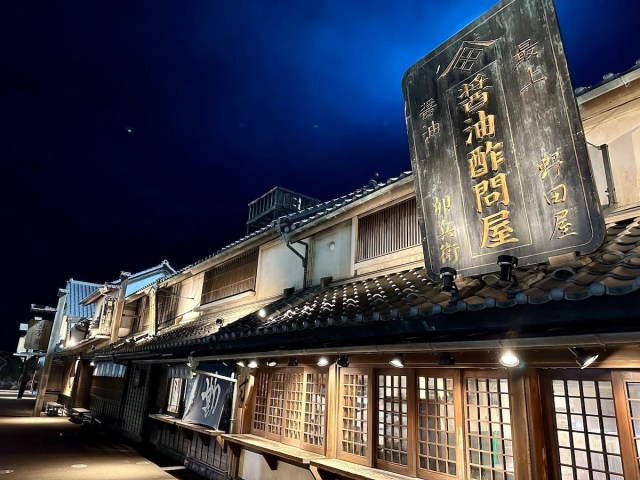
Both the setting and the unique meals here will whisk you away to traditional Japan.
Just the other day, our Japanese-language reporter Masanuki Sunakoma stopped at the Hanyu Parking Area along the Tohoku Expressway in Hanyu City, Saitama Prefecture, and got the surprise of his life.
For starters, parking areas are generally known for being smaller and more bare-bones than service areas on the highway, so he was expecting to see nothing more than a restroom and maybe a few vending machines. However, when he pulled into the complex, the entrance to the restrooms revealed this would be no ordinary parking area.
That’s right — just outside the restrooms was a traditional Japanese gate, beautifully designed to look like something straight out of the Edo period (1603-1867).
Before stepping out of the car, Masanuki pulled out his smartphone and did a quick search online, where he found that this parking area was created in collaboration with Onihei Hankacho, a series of historical novels written by Japanese author Shotaro Ikenami that has since been adapted into movies, plays, manga, anime and a long-running television drama broadcast from 1989 to 2016.
In December 2013, the parking area reopened with the new historical design, and a new name — Onihei Edodokoro. Onihei (“Demon Heizo”) was the intimidating name given to Heizo Hasegawa, a historical figure who was head of a special police force for arson and theft during the Edo period. Having come from a chequered background himself, he was hard on thieves but compassionate to those who committed crimes out of necessity, even establishing a vocational training school for criminals.
▼ Onihei Edodokoro translates to “Demon Heizo Edo District“.
The reason why this parking area was chosen for this special historical collaboration is due to the fact that it’s close to the Kurihashi Checkpoint. Today’s Tohoku Expressway is a modern-day version of the Nikko-kaido (Nikko highway) and the Oshu kaido, two major highways of the Edo Period, and checkpoints once dotted this route. Authorities would check the documents of travellers at these points, enforcing travel rules imposed by the ruling Tokugawa Shogunate to protect them against any revolts from the public.
With the Kurihashi Checkpoint acting as a reminder of the area’s link to Japan’s Edo past, the Hanyu Parking Area has been set up to transport modern-day travellers back to that time period. Specifically, the complex is designed to replicate the timespan from 1745, when Onihei was born, to 1829, when the common people of Edo flourished.
Onihei was known for his love of food, and the parking area pays homage to this passion with shops modelled on ones mentioned in the novels, all serving up “meals that Onihei would’ve found delicious”.
There are plenty of food joints here, each featuring unique nods to the Edo period, with posters that read “Onihei Edodokoro” along the way.
It’s a bit like a theme park, only here there’s no admission fee as entry is completely free. The atmosphere also changes every now and then, thanks to the “sky” installation that switches from day to night modes, and the chatter of vendors, which really helps to make you feel like you’re walking through an Edo-period town.
With so many tasty meals on offer, it was hard to decide which one to settle on, but Masanuki eventually opted for the Hiroshima-style Okonomiyaki Taiyaki from the Bunraku Yaki Honpo taiyaki store.
As he watched the staff make the taiyaki, placing bacon on top of cabbage for the savoury filling before piling on yakisoba noodles, Masanuki’s stomach began to rumble in anticipation.
It only took about five minutes to make, and once he received his piping-hot taiyaki, which is usually filled with sweet red bean paste, he took it over to a table to eat.
When he took the taiyaki out of the bag, he was pleasantly surprised to find it was a big serving, making it a great deal for just 280 yen (US$2.18).
The taiyaki looked delicious, and it tasted delicious too. Though Masanuki had never thought to pair taiyaki with a savoury filling like this before, he loved the way the sweet cake-like casing complemented the salty bacon and cabbage-and-noodle filling.
▼ It’s true — this is a meal that Onihei would’ve given a big thumbs-up to.
If Masanuki knew a place like this existed along the highway, he would’ve arrived on an empty stomach so he could enjoy even more tasty offerings. Alas, the taiyaki was now filling up his belly nicely so he would just have to make a return trip in future, perhaps when renovation work starts up again at our cheap house in the countryside, which cost us less than $10,000!
Reference: Onihei Edodokoro
Images © SoraNews24
● Want to hear about SoraNews24’s latest articles as soon as they’re published? Follow us on Facebook and Twitter!
[ Read in Japanese ]

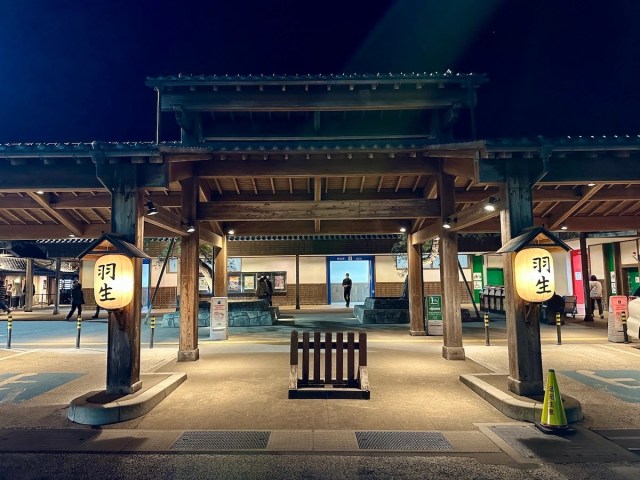
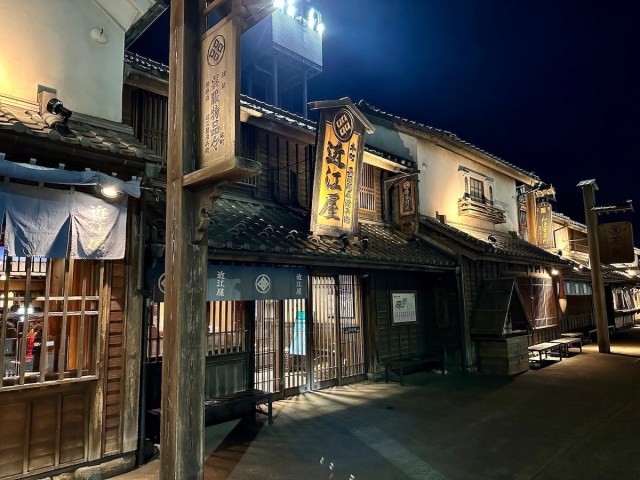


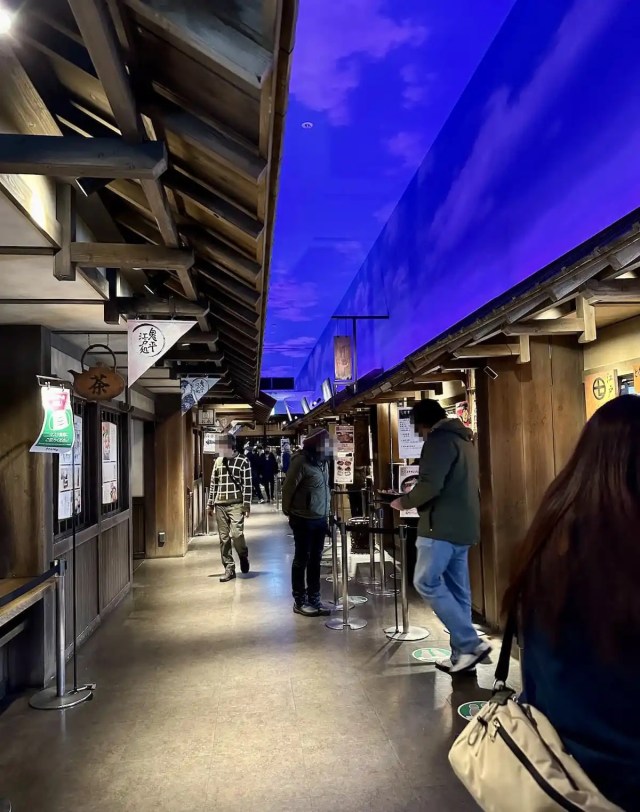
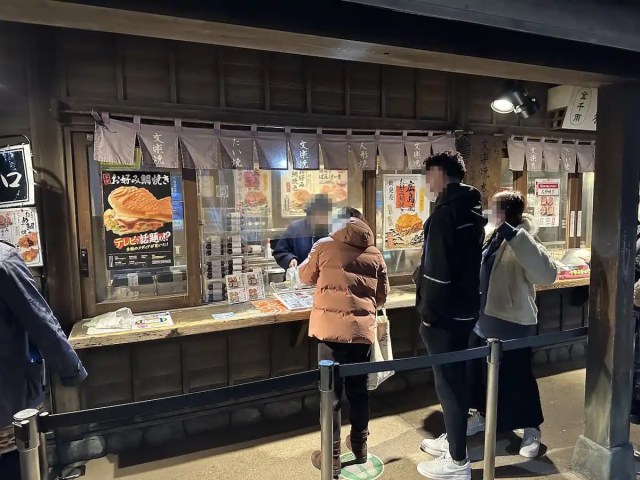
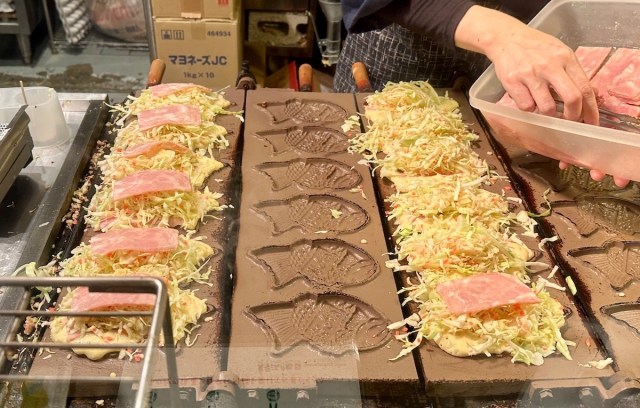
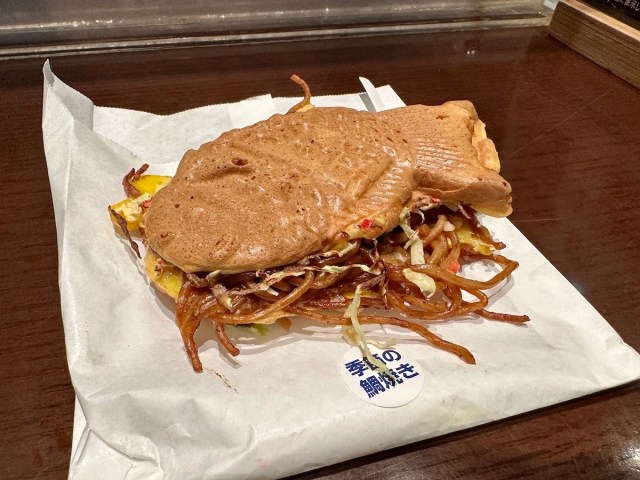
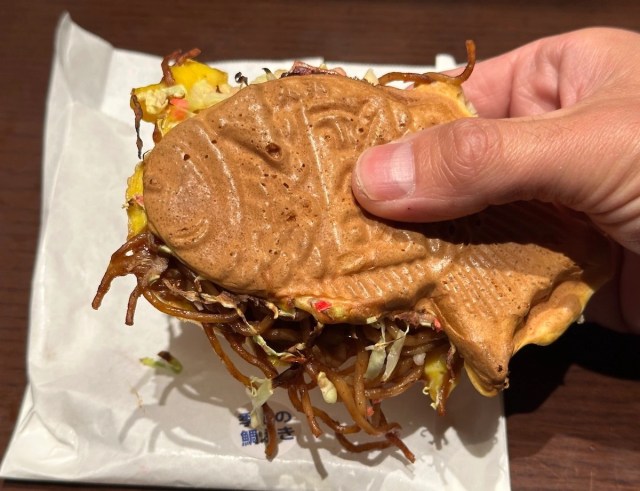
 Okonomiyaki taiyaki: Sweet and savoury combination confuses the senses
Okonomiyaki taiyaki: Sweet and savoury combination confuses the senses Small Hokkaido bookshop’s unique service is getting business from all over Japan
Small Hokkaido bookshop’s unique service is getting business from all over Japan Is the new Aerosmith traditional Japanese sweets worth eating, or should you miss this thing?
Is the new Aerosmith traditional Japanese sweets worth eating, or should you miss this thing? Champion figure skater Yuzuru Hanyu to make on-screen acting debut as samurai lord!
Champion figure skater Yuzuru Hanyu to make on-screen acting debut as samurai lord! “Hey, Japanese taxi driver, take us to the best Okinawan restaurant in Naha!”
“Hey, Japanese taxi driver, take us to the best Okinawan restaurant in Naha!” Red light district sushi restaurant in Tokyo shows us just how wrong we were about it
Red light district sushi restaurant in Tokyo shows us just how wrong we were about it Sandwiches fit for a sumo served up in Osaka【Taste Test】
Sandwiches fit for a sumo served up in Osaka【Taste Test】 Tokyo Tsukiji fish market site to be redeveloped with 50,000-seat stadium, hotel, shopping center
Tokyo Tsukiji fish market site to be redeveloped with 50,000-seat stadium, hotel, shopping center McDonald’s new Happy Meals offer up cute and practical Sanrio lifestyle goods
McDonald’s new Happy Meals offer up cute and practical Sanrio lifestyle goods Akihabara pop-up shop sells goods made by Japanese prison inmates
Akihabara pop-up shop sells goods made by Japanese prison inmates Anime girl English teacher Ellen-sensei becomes VTuber/VVTUber and NFT
Anime girl English teacher Ellen-sensei becomes VTuber/VVTUber and NFT Starbucks Japan adds a Motto Frappuccino to the menu for a limited time
Starbucks Japan adds a Motto Frappuccino to the menu for a limited time Japanese ramen restaurants under pressure from new yen banknotes
Japanese ramen restaurants under pressure from new yen banknotes Beautiful Red and Blue Star luxury trains set to be Japan’s new Hokkaido travel stars
Beautiful Red and Blue Star luxury trains set to be Japan’s new Hokkaido travel stars Pokémon Sleep camping suite and guestrooms coming to Tokyo Hyatt along with giant Snorlax burgers
Pokémon Sleep camping suite and guestrooms coming to Tokyo Hyatt along with giant Snorlax burgers All-you-can-drink Starbucks and amazing views part of Tokyo’s new 170 meter-high sky lounge
All-you-can-drink Starbucks and amazing views part of Tokyo’s new 170 meter-high sky lounge More foreign tourists than ever before in history visited Japan last month
More foreign tourists than ever before in history visited Japan last month French Fries Bread in Tokyo’s Shibuya becomes a hit on social media
French Fries Bread in Tokyo’s Shibuya becomes a hit on social media Studio Ghibli releases new action figures featuring Nausicaä of the Valley of the Wind characters
Studio Ghibli releases new action figures featuring Nausicaä of the Valley of the Wind characters New private rooms on Tokaido Shinkansen change the way we travel from Tokyo to Kyoto
New private rooms on Tokaido Shinkansen change the way we travel from Tokyo to Kyoto Starbucks reopens at Shibuya Scramble Crossing with new look and design concept
Starbucks reopens at Shibuya Scramble Crossing with new look and design concept Studio Ghibli glasses cases let anime characters keep an eye on your spectacles
Studio Ghibli glasses cases let anime characters keep an eye on your spectacles Beautiful Ghibli sealing wax kits let you create accessories and elegant letter decorations【Pics】
Beautiful Ghibli sealing wax kits let you create accessories and elegant letter decorations【Pics】 Studio Ghibli releases Kiki’s Delivery Service chocolate cake pouches in Japan
Studio Ghibli releases Kiki’s Delivery Service chocolate cake pouches in Japan New definition of “Japanese whiskey” goes into effect to prevent fakes from fooling overseas buyers
New definition of “Japanese whiskey” goes into effect to prevent fakes from fooling overseas buyers Our Japanese reporter visits Costco in the U.S., finds super American and very Japanese things
Our Japanese reporter visits Costco in the U.S., finds super American and very Japanese things Studio Ghibli unveils Mother’s Day gift set that captures the love in My Neighbour Totoro
Studio Ghibli unveils Mother’s Day gift set that captures the love in My Neighbour Totoro New Japanese KitKat flavour stars Sanrio characters, including Hello Kitty
New Japanese KitKat flavour stars Sanrio characters, including Hello Kitty New Pokémon cakes let you eat your way through Pikachu and all the Eevee evolutions
New Pokémon cakes let you eat your way through Pikachu and all the Eevee evolutions Disney princesses get official manga makeovers for Manga Princess Cafe opening in Tokyo
Disney princesses get official manga makeovers for Manga Princess Cafe opening in Tokyo Sales of Japan’s most convenient train ticket/shopping payment cards suspended indefinitely
Sales of Japan’s most convenient train ticket/shopping payment cards suspended indefinitely Sold-out Studio Ghibli desktop humidifiers are back so Totoro can help you through the dry season
Sold-out Studio Ghibli desktop humidifiers are back so Totoro can help you through the dry season Japanese government to make first change to romanization spelling rules since the 1950s
Japanese government to make first change to romanization spelling rules since the 1950s Ghibli founders Toshio Suzuki and Hayao Miyazaki contribute to Japanese whisky Totoro label design
Ghibli founders Toshio Suzuki and Hayao Miyazaki contribute to Japanese whisky Totoro label design Doraemon found buried at sea as scene from 1993 anime becomes real life【Photos】
Doraemon found buried at sea as scene from 1993 anime becomes real life【Photos】 Tokyo’s most famous Starbucks is closed
Tokyo’s most famous Starbucks is closed One Piece characters’ nationalities revealed, but fans have mixed opinions
One Piece characters’ nationalities revealed, but fans have mixed opinions We asked a Uniqlo employee what four things we should buy and their suggestions didn’t disappoint
We asked a Uniqlo employee what four things we should buy and their suggestions didn’t disappoint Princesses, fruits, and blacksmiths: Study reveals the 30 most unusual family names in Japan
Princesses, fruits, and blacksmiths: Study reveals the 30 most unusual family names in Japan You can now eat this anime girl who’s an anthropomorphized dessert in real-life Tokyo
You can now eat this anime girl who’s an anthropomorphized dessert in real-life Tokyo Overly honest taiyaki restaurant flooded with customers after admitting to reducing sweet beans
Overly honest taiyaki restaurant flooded with customers after admitting to reducing sweet beans Japanese toilets now measure fatigue levels at highway rest stops
Japanese toilets now measure fatigue levels at highway rest stops Pretend you’re Sony or Nintendo as you devour Sega with Tokyo’s new Sega Logo-yaki sweet
Pretend you’re Sony or Nintendo as you devour Sega with Tokyo’s new Sega Logo-yaki sweet Adventures in Morocco: Our Japanese language reporter orders a hamburger, gets a surprise
Adventures in Morocco: Our Japanese language reporter orders a hamburger, gets a surprise Free alcohol and curry make this cheap capsule hotel near Shinjuku Station a great place to stay
Free alcohol and curry make this cheap capsule hotel near Shinjuku Station a great place to stay Demon Slayer anime franchise gets new edible content with Kimetsu no Yaiba-yaki sweets【Tasting】
Demon Slayer anime franchise gets new edible content with Kimetsu no Yaiba-yaki sweets【Tasting】 New Yorkers go crazy for taiyaki fish ice creams
New Yorkers go crazy for taiyaki fish ice creams This bath bomb looks and feels like an Edo gold bar, is great for gifts or bathing like a shogun
This bath bomb looks and feels like an Edo gold bar, is great for gifts or bathing like a shogun Japanese sweets box from Amazon Japan is a treasure trove of dagashi nostalgia
Japanese sweets box from Amazon Japan is a treasure trove of dagashi nostalgia We eat a meal to remember…at a Japanese police station in Fukuoka
We eat a meal to remember…at a Japanese police station in Fukuoka Sega successor opens new arcade with a regional craft beer bar inside it
Sega successor opens new arcade with a regional craft beer bar inside it Truck drivers love this Saitama Ramen Shop, but will it win our hearts?【Taste test】
Truck drivers love this Saitama Ramen Shop, but will it win our hearts?【Taste test】 The strongest peeing boy statue in Japan is a hidden gem of sightseeing in Saitama
The strongest peeing boy statue in Japan is a hidden gem of sightseeing in Saitama The Big Bomb Onigiri Japanese rice ball helps us conquer mountain race but conquers us in the end
The Big Bomb Onigiri Japanese rice ball helps us conquer mountain race but conquers us in the end What makes this new Japanese convenience store chain better than 7-Eleven?
What makes this new Japanese convenience store chain better than 7-Eleven?
Leave a Reply